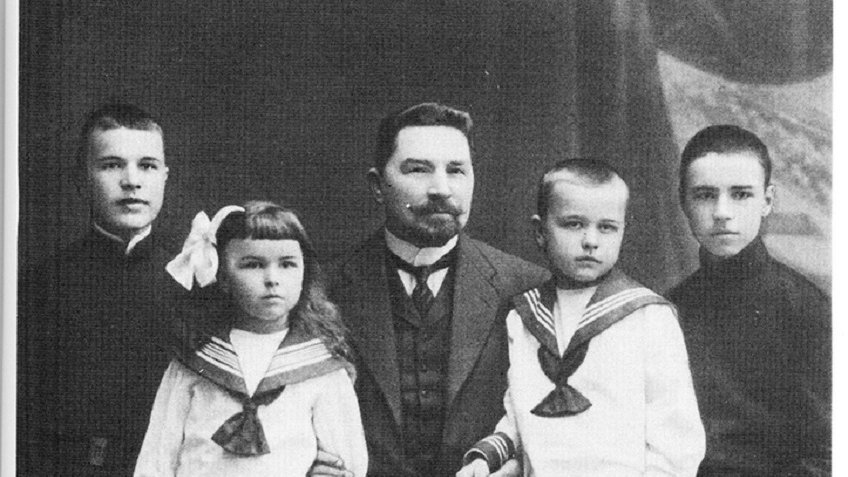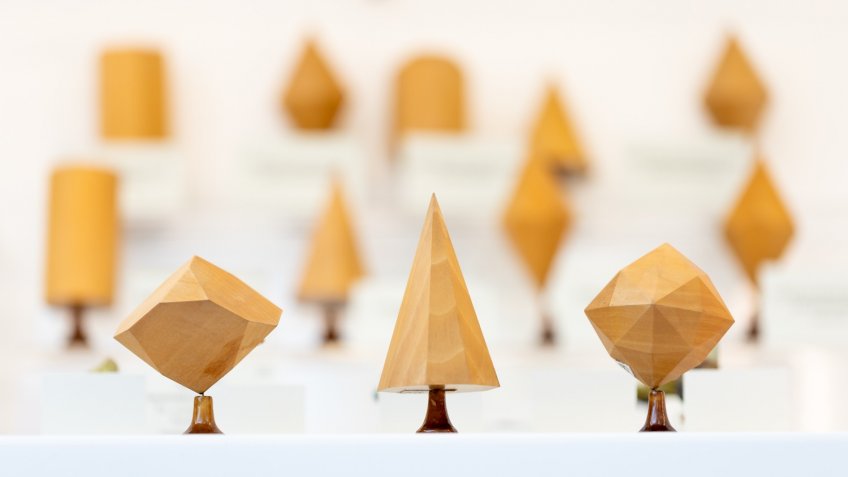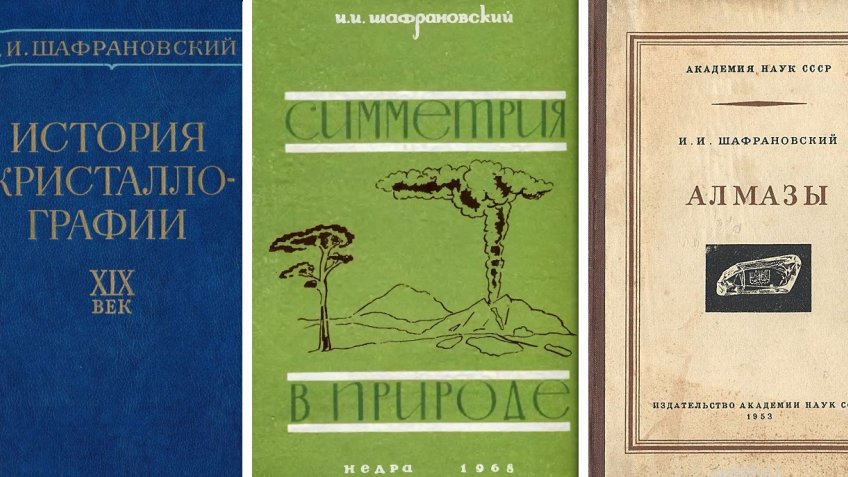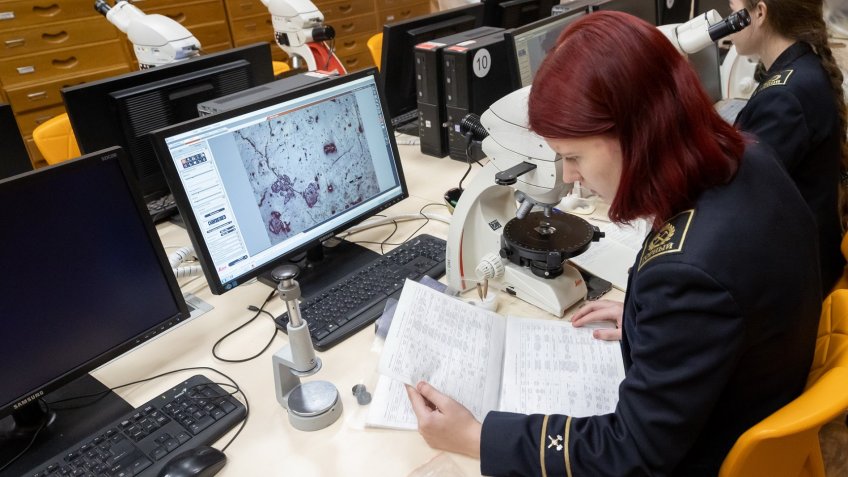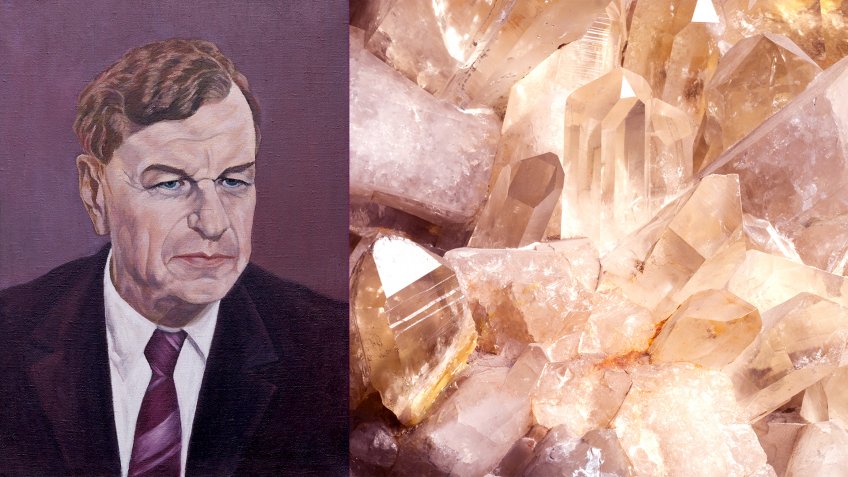
One of the largest Russian crystallographers of the 20th century, Ilarion Shafranovsky, became a doctor of sciences at the age of 35. The creator of a vast branch of science - mineralogical crystallography - devoted more than 50 years to research and teaching. However, few knew that the professor had another equally strong passion...
Among scientists who have achieved success in literature, there are many big names. For example, mathematicians Omar Khayyam, Sofia Kovalevskaya, Nikolai Lobachevsky. Moreover, the phenomenon works in both directions. Leo Tolstoy wrote the textbook Arithmetic in two parts, and the author of Alice in Wonderland, Lewis Carroll, even under his real name, Charles Dodgson, formulated one of the most important methods of mathematical logic and taught exact sciences at Oxford for 26 years.
“A mathematician who is not a poet will never be a true mathematician,” wrote the famous “father of modern analysis,” Karl Weierstrass.
Until the middle of the 19th century, intellectuals were not afraid to combine literature, philosophy, exact and natural disciplines. Moreover, they were sure that these areas of knowledge complement each other and come into contact much more often than is commonly believed today. In the 20th century, progress accelerated, and the number of encyclopedists decreased significantly. But they have not completely disappeared.
From his youth, Ilarion Shafranovsky was inspired by the writer, naturalist and philosopher Johann Goethe, whom he, in a certain sense, made his role model. The classic worked in a variety of genres: poetry, drama, epic. In parallel, he published articles on physics, comparative morphology of plants and animals, mineralogy and geology. Goethe was the author of the very term "morphology" and dreamed of creating a unified "doctrine of the form, formation and transformation of organic bodies." The Petersburg geologist was able to develop it, moreover, he went beyond the limits of the organic world and added geological formations to the study.
Ilarion Shafranovsky was born in 1907 in the family of a mathematician and director of the First Real School of Alexander II in St. Petersburg.
His father instilled in him a love for the exact sciences, and the young man entered the Faculty of Physics and Mathematics at Leningrad University. True, taking into account his own wishes, he chose the geological department. When the young man finally decided on the area of his interests, he decided exactly where he wanted to get a job after graduation. The Mining Institute was a center for the study of crystallography and mineralogy: the great Evgraf Fedorov studied and worked here, the first X-ray, goniometric and crystallization laboratories in the USSR, as well as a crystal-modeling workshop, were opened.
For 50 years, the scientist was engaged in crystal morphology of minerals. In this topic, his interest in geology and mathematics merged into one. Crystallography is based on geometry, physics and chemistry, and at all times it was developed, first of all, by mathematicians.
Despite the fact that fundamental generalizing works brought Ilarion Sharfanovsky special fame, he began his scientific activity with studying the structure and shape of specific minerals. Observations on quartz concerned the sequence of natural regeneration on mineral crystals (later called the “Shafranovsky rule”), twin intergrowths, and intergrowths with other minerals. In 1937, the young scientist wrote a monograph on the crystallography of quartz from deposits in the USSR.
He devoted a whole series of works to diamonds: methods for measuring and studying rounded shapes that are common in nature, but difficult to study, geometry of crystals and twins of diamonds, figures of dissolution and regeneration.
In 1941, Shafranovsky managed to write a unique crystallography course for higher educational institutions and publish a textbook, which was subsequently translated into several foreign languages and reprinted five times in the USSR.
With the beginning of the Great Patriotic War, the scientist joined the people's militia, and in the battles near Novgorod he was seriously shell-shocked and demobilized. During the blockade, the scientist lost all his loved ones. And then he began to write poems full of tragedy and courage:
Sirens wail again. In a blind corridor
Calls on duty, voices of fighters.
And next - the silence of the audience,
And on the cabinets - the creations of the sages ...Monstrous tons collapsed
On our city, on stones, on children, -
And busts of Mendeleev, Newton
Shaking their heads in the dark...
After a long recovery from injury, he managed to return to scientific work. Being evacuated from the institute, Ilarion Ilarionovich received a doctorate in geological and mineralogical sciences, and in 1946 he headed the department of crystallography and remained its permanent leader for more than forty years.
During this period, Ilarion Shafranovsky became one of the founders of mineralogical crystallography. He independently deduced 1403 structural varieties of simple forms, established general patterns in the development and distribution of faces, developed the doctrine of vertex and edge forms, and varieties of faceted forms.
The scientist was the first to propose to consider the external shape of crystals in the relationship between the crystal structure and the crystal-forming medium. He was prompted to this idea by the universal symmetry principle of Pierre Curie, who was widely known for his research on uranium, by that time, almost forgotten by that time. The French physicist formulated the law of superposition of symmetry (dissymmetry) that is very important for geologists, revealing the dependence of the result of impacts on the globe on the symmetry of these impacts: “As a result of the imposition of several phenomena of a different nature, each of which has its own symmetry, only coinciding symmetry elements of these phenomena are preserved” . That is, from the symmetry elements in the end there will be those that are common to all phenomena. The action of this law is manifested not only on the general shape of the Earth, but also on all objects on its surface that are affected by Earth's gravity.
On the basis of the Curie principle, Shafranovsky created the theory of "false forms" of crystals: he established the reasons for the formation of crystal growth forms that deviate from ideal development, and studied in detail samples distorted as a result of interaction with an external crystal-forming medium (curved, skeletal, granular forms, twin formations).
The study of the morphology of crystals allowed Illarion Illarionovich to extend the Curie principle to the geological, animal and plant world, combining the external forms of various natural bodies with a single approach. A generalization of the vast amount of material in this area was made in the monograph "Symmetry of Natural Forms".
The work of the scientist and the proposed classification facilitated orientation in the variety of real crystals, as well as deciphering the dynamics of their formation in natural and artificial conditions. It would be a mistake to think that this knowledge refers to exclusively theoretical material.
“Crystallography is closely connected with industry. The development of metallurgy, instrument making, radio engineering, the optical industry, the production of chemical products, the creation of high-strength and heat-resistant materials, stone casting and other industries require in-depth knowledge in the field of crystallography from their employees. Modern technology is unthinkable without the widest possible use of crystals. Suffice it to recall their role in rocket science, electrical engineering,” said Ilarion Shafranovsky.
The scientist was regularly invited to lecture at universities and research institutes in our country and abroad. Honored Scientist of Russia, winner of the Fedorov Prize of the Russian Academy of Sciences (the highest award in the field of crystal science), honorary member of the Mineralogical Society, honorary academician of the Russian Academy of Natural Sciences, had great authority in the scientific world.
For Ilarion Shafranovsky crystallography was inseparable from poetry. It was not for nothing that he compared the work of a poet and a naturalist, who peer into words and natural phenomena that seem completely alien in meaning and find in them common features and a single logical thread.
Having written many of his own poems, Ilarion Ilarionovich also translated one of the most significant works of world literature - Goethe's Faust as a tribute to his idol.

